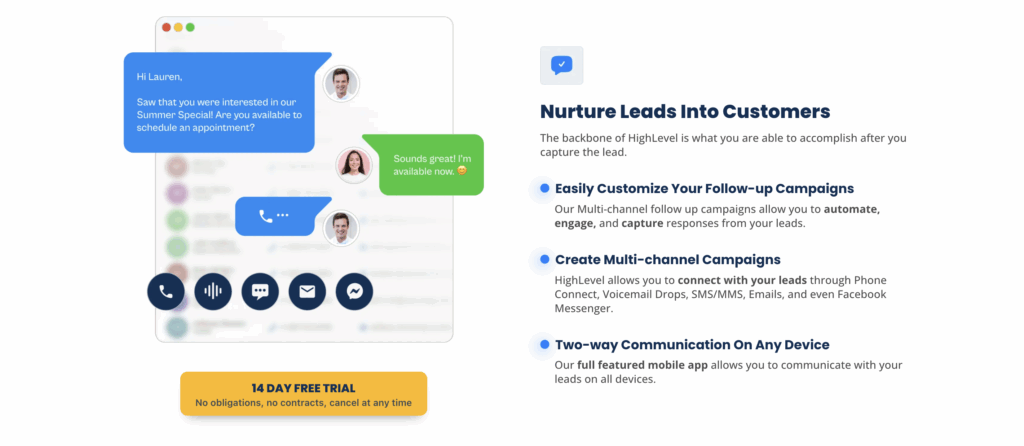Search Engine Optimization (SEO) is essential for small businesses to improve online visibility and attract more customers. You can increase traffic, build credibility, and grow your business by ranking higher on search engines like Google. In 2025, SEO is more important than ever as competition continues to grow and search engines prioritize high-quality, relevant content. This guide provides a step-by-step plan to improve your small business website’s ranking with actionable strategies.
Why SEO Matters for Small Businesses
SEO helps your business get discovered online. When potential customers search for products or services you offer, a well-optimized website ensures you appear in search results.
Benefits of SEO for Small Businesses
- Increased Visibility: Higher rankings mean more people find your site.
- Cost-Effective Marketing: SEO generates organic traffic without the ongoing cost of ads.
- Better Credibility: Appearing on the first page builds trust with potential customers.
- Higher Conversions: Targeted traffic leads to better conversion rates.
Start with Keyword Research
Keywords are the foundation of SEO. These are the terms people type into search engines when looking for your products or services.
How to Find the Right Keywords
- Brainstorm Your Services: List the products or services you offer.
- Use Keyword Tools: Tools like Semrush or Google Keyword Planner help identify relevant keywords with search volume and competition data.
- Focus on Long-Tail Keywords: Phrases like “affordable accounting services in [city]” are easier to rank for and more specific to customer needs.
Semrush for Keyword Research
- Keyword Magic Tool: Generates keyword ideas with search volume, competition, and trends.
- Competitor Analysis: Find out which keywords your competitors rank for and identify gaps you can target.
- Difficulty Scores: Understand how challenging it is to rank for a specific keyword.

Starting from $10.83/month (yearly)
14 Days Free-Trial
Key Features
Extensive SEO toolkit with analytics and reporting.
Keyword research, site audit, and competitor analysis tools.
Content marketing and social media management features.
Why We Recommend It
Provides a comprehensive set of tools for digital marketing.
It helps improve website visibility and search engine ranking.
Supports a wide range of marketing activities beyond SEO.
Pros & Cons
- Very detailed and comprehensive data
- Regular updates with new features and improved capabilities
- Integrates with other digital marketing tools and platforms
- It can be overwhelming for beginners
- High subscription cost for advanced features
Example Using Semrush:
For a bakery in Chicago:
- Short-tail keyword: “Bakery”
- Long-tail keyword: “Custom wedding cakes in Chicago”
- Semrush will show search volume, trends, and similar phrases to expand your list.
Optimize Your Website for On-Page SEO
On-page SEO refers to optimizing elements on your website to make it search-engine friendly.
Key On-Page SEO Elements
- Title Tags: Include primary keywords in your page titles. Keep it under 60 characters.
- Example: “Custom Wedding Cakes in Chicago – [Your Bakery Name]”
- Meta Descriptions: Write concise, engaging summaries of your page content. Aim for 150-160 characters.
- Example: “Looking for delicious custom wedding cakes in Chicago? [Your Bakery Name] offers handcrafted designs for every occasion.”
- Headings (H1, H2, H3): Use headings to structure your content and include keywords naturally.
- Image Optimization: Compress images for faster loading and add descriptive alt text.
- Internal Links: Link to other pages on your website to improve navigation and keep visitors engaged.
- Mobile Optimization: Ensure your site looks and works great on smartphones. Use Google’s Mobile-Friendly Test to check.
Surfer SEO for On-Page Optimization
Surfer SEO is an excellent tool for fine-tuning on-page SEO.
- Content Editor: Provides real-time suggestions for keyword usage, headings, paragraph length, and image count.
- SERP Analyzer: Analyzes top-ranking pages for your keyword and gives actionable insights to optimize your content.
- Keyword Density: Helps you avoid overstuffing or underusing your target keywords.
How to Use Surfer SEO:
- Open the Content Editor and enter your target keyword (e.g., “custom wedding cakes in Chicago”).
- Follow the tool’s recommendations to adjust headings, word count, and images to match top-ranking competitors.
- Save and publish your optimized content.
Build a Strong Local SEO Presence
If your business serves a specific area, local SEO is crucial for attracting nearby customers.
Steps to Improve Local SEO
- Claim Your Google Business Profile: Go to Google Business Profile and complete your listing with accurate information, including your address, phone number, and business hours.
- Encourage Reviews: Positive reviews boost your credibility and rankings. Ask satisfied customers to leave feedback.
- Local Keywords: Include city or neighborhood names in your content and meta descriptions.
- Local Directories: List your business on platforms like Yelp, TripAdvisor, and industry-specific directories.
- Create High-Quality Content
Content is king in 2025. Search engines prioritize websites that provide valuable, relevant, and well-written content.
Content Ideas for Small Businesses
- How-To Guides: Teach your audience something useful related to your business.
- Example: “How to Choose the Perfect Wedding Cake” for a bakery.
- FAQs: Address common customer questions.
- Case Studies: Share stories of how your products or services solved a problem.
- Blog Posts: Publish regular updates about industry trends or tips.
Semrush for Content Strategy
- Topic Research Tool: Find trending topics and popular questions in your niche.
- Content Audit: Identify underperforming pages and improve them with better keywords and content.
- SEO Writing Assistant: Ensure your blog posts are SEO-friendly with real-time suggestions.
Build Backlinks
Backlinks are links from other websites to your site. They signal to search engines that your website is credible and trustworthy.
How to Get Backlinks
- Guest Blogging: Write posts for other websites in exchange for a link back to yours.
- Partner with Local Businesses: Share links with complementary businesses in your area.
- Create Shareable Content: High-quality infographics, videos, or blog posts are more likely to be linked by others.
- Reach Out: Politely ask industry blogs or publications to link to relevant pages on your site.
- Monitor and Improve Your Performance
SEO is an ongoing process. Regularly monitor your site’s performance to identify what’s working and where you can improve.
Tools to Use
- Google Analytics: Tracks traffic, user behavior, and conversions.
- Google Search Console: Monitors search performance and identifies indexing issues.
- Semrush: Tracks keyword rankings, backlinks, and competitors.
- Surfer SEO Audit Tool: Identifies gaps in your content compared to top-ranking pages.
Key Metrics to Watch
- Organic Traffic: The number of visitors coming from search engines.
- Bounce Rate: The percentage of visitors who leave after viewing one page (lower is better).
- Keyword Rankings: Track how your target keywords are performing.
Speed Up Your Website
Fast-loading websites rank higher because they provide a better user experience.
How to Improve Site Speed
- Compress Images: Use tools like TinyPNG or ShortPixel.
- Enable Browser Caching: This saves website data locally for faster loading.
- Use a Content Delivery Network (CDN): Kinsta and Cloudflare offer CDN services to speed up loading.
- Upgrade Hosting: Choose a reliable hosting provider like Kinsta for superior speed and uptime.
- Stay Updated on SEO Trends
SEO evolves every year. Keep up with algorithm updates and emerging trends to stay ahead.
Trends to Watch in 2025
- AI-Powered Search: Tools like ChatGPT and Google Bard are changing how people search. Optimize your content for conversational queries.
- Voice Search: Include natural language and long-tail keywords for voice-activated devices.
- Core Web Vitals: Google continues to prioritize metrics like loading speed, interactivity, and visual stability.
Conclusion
SEO is a powerful tool for small businesses looking to grow online. Tools like Semrush and Surfer SEO simplify the process, from keyword research to content optimization. By focusing on local SEO, high-quality content, backlinks, and performance tracking, you can improve your rankings and drive more traffic to your website.
Stay consistent, monitor your progress, and adapt to changes in SEO trends. With the right strategy and tools, your small business can rank higher in 2025 and beyond.





